Trail cameras are important accessories for any hunter, especially when mapping bear paths and populations in a given area. The cameras also help in judging the size of bears, so you’d know what you’re dealing with.
Unfortunately, bears seem to have a knack for finding these cameras and destroying them, and you may find yourself wondering, why do bears attack trail cameras?
Bears attack trail cameras out of curiosity, and they are often attracted by the infrared lights during nighttime shots. They also attack because they can pick up a human scent around the cameras, which gives the bear the impression that the camera is a food source.
The rest of the article will look at why bears attack trail cameras. You’ll also learn practical steps to prevent these attacks and ensure your camera lasts longer in the woods.
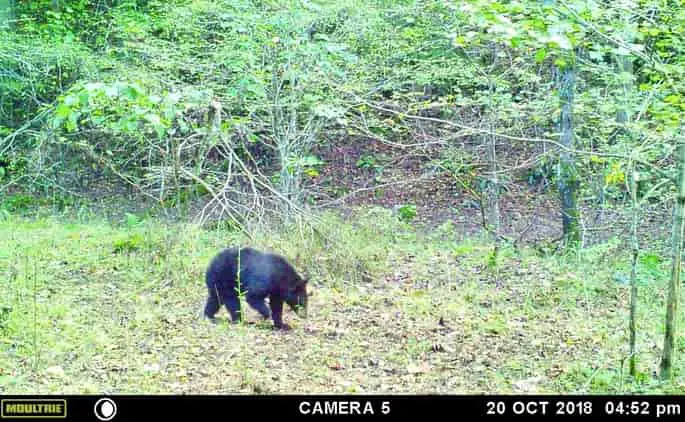
Table of Contents
- Do Bears Destroy Trail Cameras?
- Why Are Bears Attracted to Trail Cameras?
- How To Prevent Bears From Finding Your Camera
- How Do You Bear Proof a Trail Camera?
Do Bears Destroy Trail Cameras?
Bears destroy trail cameras, and there are numerous examples available of bears tearing out nicely concealed cameras planted by wildlife photographers and hunters. This means it is essential for hunters to be extremely careful when placing cameras around bear territory.
Therefore, if you’re thinking of planting trail cameras around known bear territory, you should be aware that you’re likely to end up with a banged-up device – at least unless you take steps to prevent that from happening.
Why Are Bears Attracted to Trail Cameras?
Bears are attracted to trail cameras because they often have a strong human scent and may emit infrared lights while shooting. The plastic parts and other internal components of a camera also have distinct smells a bear can pick up on.
Bears have a sense of smell that’s over 2,000 times more powerful than ours. This makes it easy for them to pick up any smells out of place in their natural habitat. A camera that comes out of a bag that contains other human belongings and possibly some food is an instant beacon to any bear that’s close by.
Additionally, bears can see color. If the camera emits infrared light while working, the bear is likely to notice it and approach it to get a better look at the light source.
How To Prevent Bears From Finding Your Camera
Wondering how to protect your trail camera from being destroyed? Here are a few things you can do to make it harder for bears to find your camera:
Avoid Leaving Any Human Scent on the Camera
Since bears have a powerful sense of smell, you should take preemptive measures to ensure the bear won’t pick up your camera by smelling it. Some options you can try include:
- Wrap your camera. Throwing the camera in your bag with other accessories can deposit human scent on it. Leaving it next to the table with other tools as you devour that medium-rare roast you prepped for lunch isn’t a good idea either. Instead, cover up the camera and place it in a designated bag until it’s time to install it.
- Use gloves. Handling your camera with your bare hands is a quick way to leave your scent on it. Using hand gloves while handling the camera increases your chances of leaving it scent-free.
- Don’t hang around the trail camera too long. If you don’t know how to mount a trail camera quickly, you should practice before heading out to your intended site. The longer you stay at the site, the more scent you’re leaving for a bear to find and translate as the possibility of food. From mounting the camera to swapping out your SD cards, you should always act quickly. Don’t be tempted to check the pictures on the spot.
Avoid Using Infrared Trail Cameras
Bears can see shapes and colors as well as humans. However, they go one better with their ability to see at night due to the presence of a biologic reflector system known as tapetum lucidum.
Combine this with the fact that bears can see red among other colors, and you can probably understand why bears can easily find infrared trail cameras even at night.
Once the glow triggers the bear’s curiosity, it’ll come closer to investigate, which won’t end well for your camera. Using black flash trail cameras solves this problem as they’re undetectable to a bear’s eyes.
The Vikeri 1080P 16MP Trail Camera, the Blazevideo 2-Pack Night Vision Game Trail Cameras, and the Cuddeback CuddeLink Black Flash J-1538 Cameras (all from Amazon) are some examples of fantastic options you can choose.
They’re all designed to capture images stealthily, and the Cuddeback models also allow you to create a network of cameras for wider coverage.
Hang Your Cameras High Enough
Sometimes the easiest way to keep bears from finding your camera is to make sure you position the camera well away from their direct line of sight. The best way to achieve this is to hang the cameras high into the tree.
A full-grown black bear can reach 7ft (2.13 m) into the air. So, to ensure the camera is well out of their line of sight, the camera should be at least 8ft (2.44 m) off the ground. At that height, the bear won’t reach the camera even when it does see it.
How Do You Bear Proof a Trail Camera?
Despite your best efforts, there’s always the possibility of a bear finding your trail camera. In that situation, you want to make sure the camera is difficult to pull down or destroy.
You can bear-proof your trail camera by mounting it in a lockbox held down by python cables. You can also discourage a bear from reaching up into the tree for the camera by only mounting it on trees that aren’t large enough to support a bear’s weight.
Your trail camera will usually feature tough plastic, but this plastic is generally no match for an average bear. Camera lockboxes can encase your trail camera, making it more durable against a bear’s stomps and gnaws.
Your trail camera’s manufacturer will have a lockbox available to fit the camera. However, if they don’t, you should be able to find one that fits relatively easily.
Additionally, a python cable will be better to hold your camera in place as a bear pulls on it than the standard nylon straps most cameras come with, so pairing your lockbox with python cables is a good idea.
When picking the tree for your camera, you should opt for small trees with a diameter you can fit your hand around. Such trees won’t allow a bear’s claws to stick while attempting to climb, and the small tree size will also discourage it.
Remember, by bear proofing your trail camera you’ll also deter thieves…especially if you are using your trail camera on public lands where other hunters may be present.
Thanks for reading!
- Neem Oil Deer Repellent: Does It Really Work?
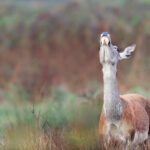
- Is It Okay To Burn Bark In a Wood Stove?
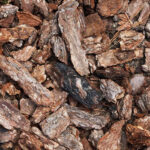
- Do Deer Eat Morel Mushrooms?
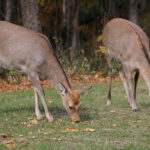
- How To Properly Dispose of Wood Stove Ashes (Safely!)
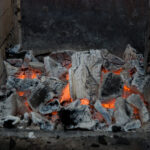
- Is Fatwood Safe for Wood Stoves? Here’s What You Should Know

- Is Beaver Good to Eat? You May Be Surprised!

- Is Bread Bad For Deer? Here’s What You Should Know
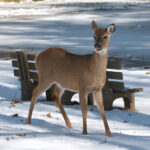
- Are Roosters Good to Eat?

- 3 Easy Ways To Tell If Your Wood Stove Is Leaking
